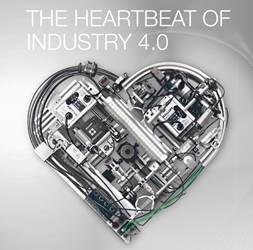The Industrial Internet of Things (IIoT) is reshaping the industrial automation landscape, offering unprecedented connectivity and data-driven insights. In this post, I will explore the current and future trends driving the adoption of IIoT, the challenges organizations face in its implementation, and the abundant opportunities it presents for enhancing operational efficiency and unlocking new possibilities.
Trends in the IIoT
Several key trends are pushing industries toward a more connected and efficient future. Some of these trends include:
-
- Greater adoption: IIoT is experiencing a wave in adoption across industries as organizations recognize its power to revolutionize operations, boost productivity, and enable smarter decision-making.
- 5G optimization: The development of 5G networks promises to supercharge the IIoT by delivering ultra-low latency, high bandwidth, and reliable connectivity, empowering real-time data interpretation and response.

- Increased flexibility: IIoT solutions are becoming more flexible, allowing seamless integration with existing infrastructure and offering scalability to accommodate evolving business needs.
- Combining AI and duplicating datasets: The blending of artificial intelligence (AI) and duplicating datasets is unlocking new possibilities for the IIoT. By creating dataset replicas of physical assets, organizations can simulate, monitor, and optimize operations in real time, driving efficiency and advanced predictive maintenance.
- Cyber security advancements: As the IIoT expands, cyber security advancements are necessary for safeguarding critical data and infrastructure. Robust measures such as encryption, authentication, and secure protocols are being refined to protect against potential threats.
Challenges in IIoT implementation
The implementation of IIoT comes with its fair share of challenges for industries.
Effectively managing and securing the vast amount of data generated by IIoT devices, for example, is a critical challenge. Organizations must enforce robust data storage, encryption, access control mechanisms, and data governance practices to ensure data integrity and privacy.
Reliable and seamless connectivity between devices, systems, and platforms is also crucial for the success of IIoT implementations. Organizations must address connectivity challenges such as network coverage, latency, and signal interference to ensure uninterrupted data flow.
Additionally, integrating IIoT technology with existing legacy infrastructure can be complex. Compatibility issues, interoperability challenges, and retrofitting requirements must be fully addressed to ensure painless integration and coexistence.
Opportunities in IIoT implementation
The implementation of IIoT presents vast opportunities for businesses, such as:
-
- Real-time asset tracking: IIoT allows for real-time tracking of assets throughout the production process, ensuring location visibility and hardware traceability. By monitoring asset location, condition, and usage, organizations can optimize their use of assets, minimize losses, and boost operational efficiency.
- Quality assurance enhancements: Engaging IIoT technologies such as sensors and data analytics, organizations can enhance quality assurance by continuously monitoring production parameters, deducing anomalies, and minimizing defects.
- Proactive decision-making: IIoT enables real-time remote monitoring of manufacturing processes, allowing for proactive decision-making, reducing downtime, and optimizing resource allocation. Additionally, IIoT facilitates predictive maintenance by leveraging data from connected devices. By proactively revealing equipment failures and adjusting maintenance requirements, organizations can reduce or eliminate unplanned downtime and optimize maintenance schedules.
- IIoT empowers real-time tracking of inventory levels, automating reordering processes, reducing stock outages, and optimizing inventory management practices, leading to improved profits and enhanced customer satisfaction.
Navigating the IIoT landscape presents both challenges and opportunities. As organizations adopt IIoT technologies, they need to address challenges related to secure data storage, connectivity, and integration with legacy infrastructure. However, by overcoming these challenges, organizations can unlock opportunities such as remote monitoring of operations, improved quality control, predictive maintenance, efficient inventory management, and enhanced asset tracking.
Click here for more on seizing the opportunities of the IIoT.





